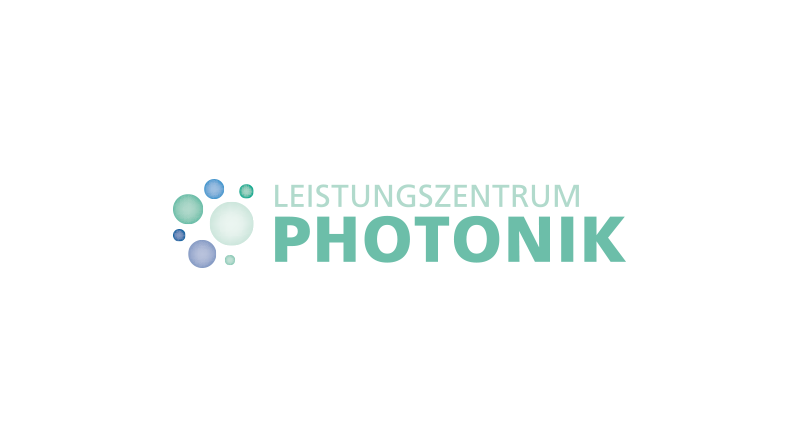“Center of Excellence in Photonics”: Three million euros for new research collaborations offering applications in medicine and life sciences
With nearly three million euros in funding, the “Center of Excellence in Photonics” as Jena's innovation platform continues to expand its research. 1.5 million euros of this comes from the Free State of Thuringia. The grants will be used to initiate new research collaborations, especially in imaging for life sciences and medicine. A particular focus is on technologies operating in the spectral range of EUV radiation and beyond.
Since 2016, the “Center of Excellence in Photonics” has taken up the challenge of developing innovative solutions with light for important future fields and promoting their implementation and application in science, industry and society. The center of excellence combines applied research with scientifically outstanding basic research on the control of light – ranging from its generation and manipulation to its application.
Free State of Thuringia funds new research collaborations with 1.5 million
Since its launch, the Free State of Thuringia has supported the center as a relevant innovation and transfer platform at the optics location Jena. This year, the state is funding the center of excellence and the cooperation between partners with 1.5 million euros. The Fraunhofer-Gesellschaft is contributing another 1.35 million for projects on efficient research transfer, such as support for optics and photonics startups. The joint funding by the Free State of Thuringia and the Fraunhofer-Gesellschaft also enables the center of excellence to focus on promoting young scientists, in particular by supporting doctoral projects and supplementing them with innovative future topics within the framework of the “Fraunhofer Graduate Research School of Applied Photonics”.
New research collaborations for applications in life sciences
The state's grant will be used in particular for research collaborations between the partners involved in the center: The focus is on the so-called “Joint Imaging Labs”. The goal is to pool the expertise of the partners with regard to innovative and high-performance imaging technologies. Applications are planned especially in the fields of life sciences and medicine.
- In the “Joint EUV-XUV Technology Lab”, the development of a new type of imaging at the boundary between extreme ultraviolet light and the soft X-ray range is to be driven forward. In contrast to the established method of electron microscopy, which can only characterize tissue samples on the surface, the latest EUV technologies enable non-destructive imaging on a larger scale. In recent years, the Helmholtz Institute Jena, a partner of the “Center of Excellence in Photonics”, has been able to realize the world's most powerful microscopy systems in the EUV range. Record resolutions in the range of less than 50 nanometers could be demonstrated as well as fast measurements on large areas. Simultaneously, the Fraunhofer Institute for Applied Optics and Precision Engineering IOF developed the world's most powerful femtosecond laser at a wavelength of two micrometers as part of the Fraunhofer CAPS cluster. This enables an efficient generation of secondary radiation in the soft X-ray range. The goal of the “Joint EUV-XUV Technology Lab” is to develop a worldwide unique high-power source in the soft X-ray range on the basis of this comprehensive know-how and to make it usable for scientific and industrial tasks with adapted imaging processes.
- The “Joint Biophotonic Imaging Lab” intends to support the search for new medical agents, e.g., new antibiotics. The collaboration between the Leibniz Institute for Natural Product Research and Infection Biology (Leibniz-HKI) and Fraunhofer IOF aims to establish a platform for joint, interdisciplinary research and development work on highly sensitive opto-fluidic cell analysis as well as a lively exchange between researchers in biology, materials science and physics. Within this framework, research is being conducted into how even the smallest amounts of cells can be detected without external influences, for example by means of color or fluorescent labeling. Current methods allow fast and rough screening, but they have too low sensitivity and thus high uncertainties for complex biomedical applications. The “Joint Biophotonic Imaging Lab” aims to close this application gap and develop new ways for automated classification of cells by combining powerful scattered light-based optical sensing and bio-medical microfluidics.
- The third project “Joint Multimodal Imaging Lab” addresses the development and testing of intense ultrashort pulse laser sources for multimodal biomedical imaging. In recent years, the Leibniz Institute for Photonic Technologies (Leibniz-IPHT) and Fraunhofer IOF have very successfully explored compact and robust fiber laser concepts for applications of coherent Raman spectroscopy in combination with other nonlinear processes such as Second Harmonic Generation (SHG) microscopy and multi-photon fluorescence in life sciences. The potential as well as major advantages of multimodal nonlinear microscopy for investigating the chemical composition of complex samples without the use of exogenous dyes could be successfully demonstrated. The focus of the project is now to further optimize these imaging approaches for clinical application by implementing an optimized, powerful infrared fiber laser source in the NIR-II window (NIR meaning "near infrared"). The interplay of scattering and absorption enables high penetration depths. On the one hand, research is focused on increasing the penetration depth of third-harmonic generation microscopy (THG) in biological tissue so that tissue structures below the surface can also be made visible. On the other hand, research into SHG ptychography for quantitative analysis of tissue is also of great interest. The advantages of the detection method ptychography are the simple, potentially lens-free detection, the quantitative determination of the analyte concentration by measuring the scattered field and the comparatively large sample volumes.

